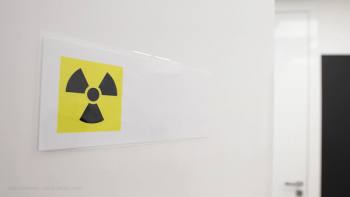
Brukinsa More Cost-Effective and Keeps Cancer from Progressing Longer Than Imbruvica
In January 2023, the Brukinsa, a next-generation BTK inhibitor, received FDA approval for chronic lymphocytic leukemia (CLL).
Brukinsa (zanubrutinib) and Imbruvica (ibrutinib) are Bruton tyrosine kinase (BTK) inhibitors FDA-approved to treat chronic lymphocytic leukemia (CLL) in adults, among other blood cancers. In 2013, AbbVie and Janssen Biotech's Imbruvica was the first BTK inhibitor approved by the FDA. BeiGene's Brukinsa was initially approved in 2019 to treat mantle cell lymphoma in adults. In January 2023, the next-generation BTK inhibitor received FDA approval for CLL.
CLL is the most common type of leukemia in the U.S., with an incidence rate of about 4.2 per 100,000 people per year. CLL is incurable, and treatment aims to control disease progression and improve or maintain the patient's quality of life. According to a 2019 study, the average healthcare cost over a year for patients with progressing CLL is $84,785. For those without progression, it is $70,593.
Although some patients may initially respond well to treatment, many eventually relapse and need additional treatment. Some are refractory to the initial treatment and also require a different therapy. The National Comprehensive Cancer Center Network clinical guidelines for managing CLL recommend Brukinsa, Imbruvica or Calquence (acalabrutinib) monotherapy and Venclexta (venetoclax) plus rituximab as category 1 treatments for relapsed or refractory CLL.
Of these options, Imbruvica has been the most commonly used second- and third-line treatment for CLL, but in 2022, the National Comprehensive Cancer Center Network guidelines bumped Imbruvica from “Preferred Regimens” to “Other Recommended Regimens” due to toxicities.
The ALPINE trial, a phase 3 head-to-head study comparing Brukinsa and Imbruvica, found that participants with CLL taking Brukinsa had a significantly longer progression-free survival compared with those who took Imbruvica. In light of these results, Asher Chanan-Khan, M.D., professor of medicine and oncology at Mayo Clinic School of Medicine in Jacksonville, FL, and fellow investigators conducted a number needed to treat analysis comparing Brukinsa and Imbruvica as second-line or later treatment in patients with relapsing or refractory CLL.
The results were published in the May 2025
Using data from the ALPINE trial, the 2024 Red Book report, and previous studies, the researchers analyzed model inputs, including clinical inputs, treatment-related costs, subsequent treatments and related costs, disease-related medical resource utilization costs, disease progression costs and adverse event rates and related costs.
The results showed that patients who received Brukinsa as a second-line therapy for relapsed or refractory CLL had a 79.5% 24-month progression-free survival rate versus 67.3% for those who received Imbruvica. The analysis estimated that treating eight patients with Brukinsa instead of Imbruvica prevented one death or progression. Additionally, treating patients with Brukinsa versus Imbruvica resulted in an estimated cost savings of $47,132 per patient.
Factors contributing to the reported cost savings included lower drug acquisition costs, reduced subsequent treatment costs, lower medical resource utilization, and lower costs related to adverse events. In a model of a clinical practice with 100 patients treated with Brukinsa, an estimated 13 disease progressions or patient deaths would be avoided over 24 months. The practice could also see potential cost savings of $4.7 million.
Chanan-Khan and his colleagues concluded that Brukinsa is a clinically beneficial and cost-saving alternative to Imbruvica as a second-line treatment for relapsing or refractory CLL. They added, “…cost savings could be realized from the Enhancing Oncology Care model, a value-based payment structure that incentivizes providers to deliver high-quality care while reducing overall health care spending.”
Newsletter
Get the latest industry news, event updates, and more from Managed healthcare Executive.




